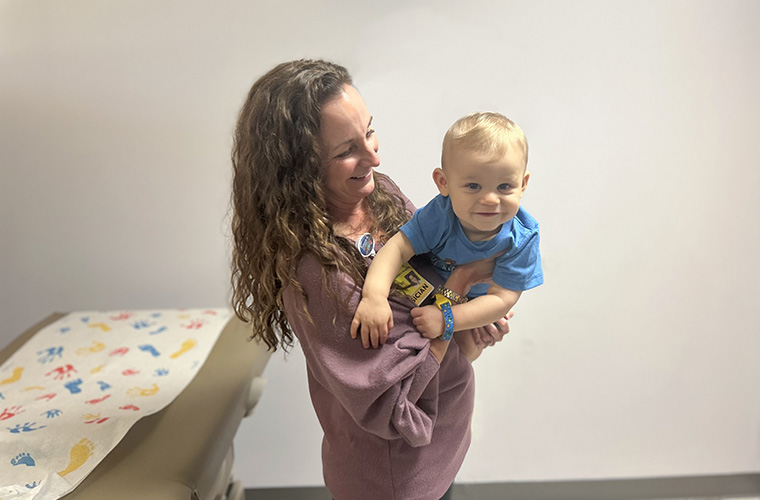Living with Hemophilia: Wyatt’s Story

Wyatt Quevedo is a happy and energetic 15-month-old who is loves to swing, jump on and over everything and visit the playground with his big sister. Unfortunately, some of the things he loves to do most put him at risk for serious injury. At just 1 month old, Wyatt was diagnosed with hemophilia A, a bleeding disorder in which the blood does not clot properly.
“The diagnosis was such a shock and we were scared, in denial and confused all at the same time,” said Roxannet Quevedo, Wyatt’s mother. “But the immediate support we received from St. Joseph’s Children’s Hospital’s experts who specialize in bleeding disorders made all of the difference.”
According to Dr. Erin Cockrell, medical director of the Center for Bleeding and Clotting Disorders for St. Joseph’s Hospitals, patients with hemophilia have low levels of blood-clotting factors.
“Clotting factors are proteins the body needs to seal a wound, stop bleeding and promote healing,” Dr. Cockrell said. “People with hemophilia may bleed uncontrollably and for a long time after an injury or surgery. Even minor scrapes or cuts from a fall off a bike can be cause for concern.”
In the most common types of hemophilia, there are low levels of either factor VIII (hemophilia A) or factor IX (hemophilia B). The lower the amount of the factor, the more likely it is that bleeding will occur which can lead to serious health problems.
“Because Wyatt has less than 1% of factor VIII in his body, he has what is considered a severe form of hemophilia A,” adds Dr. Cockrell.
Even though the majority of hemophilia runs in families, some patients have no prior history of family members with hemophilia. Approximately one-third of the time, the baby with hemophilia is the first one in the family to be affected with a mutation in the gene for the clotting factor.
Treatment for hemophilia and other bleeding disorders depends on the type and severity of the condition but may include factor replacement therapy and/or other medications.
For parents of children just diagnosed with hemophilia, Roxannet offers this advice. “It can be overwhelming to learn your child has a lifelong condition with no current cure, but try to focus on one day at a time. Focus on what you can control. There are treatments available to prevent and treat bleeding events and minimize the complications associated with the condition, these children can still have a bright future.”
The Center for Bleeding and Clotting Disorders is a federally funded hemophilia treatment center that provides care to patients of all ages who have a wide range of bleeding disorders including hemophilia A and B, von Willebrand disease, rare factor deficiencies, thrombotic conditions and more.
In addition to physicians who specialize in bleeding disorders, patients and families have additional support from the program’s Nurse Coordinators, Pharmacist, Physical Therapists, Child Life Specialists, and Social Worker.
To learn more about St. Joseph’s Center for Bleeding and Clotting Disorders, click here.
